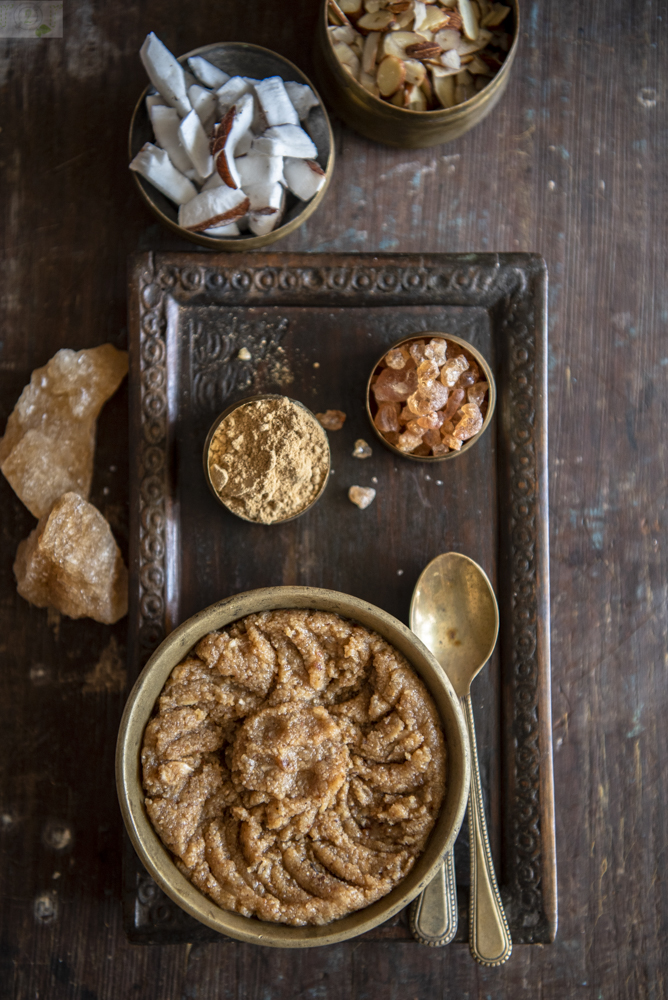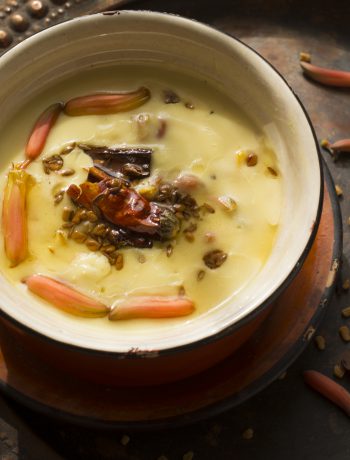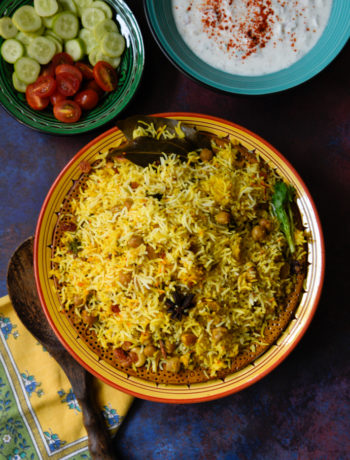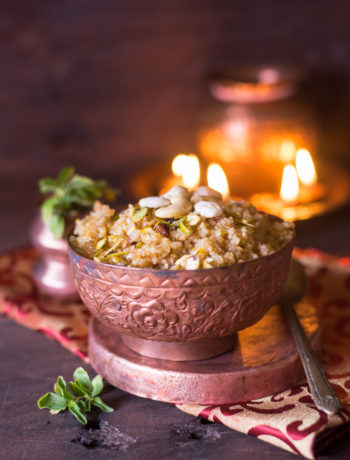The Gujarati Shabdkosh/dictionary describes Vasana as “foods consisting of various medicinal herbs and spices prepared and consumed during winters.” Vasana are superfoods created in our kitchens, designed by our ancestors and eaten to not just warm our body and boost immunity, but also to help it remain healthy, well greased, efficient and able throughout the year. A slice or small bowl full of Vasanu is a must during winter mornings. Gujarat has an extremely rich (literally and figuratively) repertoire of Vasana, with each region and community leaning towards traditional and heirloom recipes that have been handed down to them by their matriarchs. Parsi, Bohri, Jain, Kathiyawari, Kutchhi, Surti… the list is endless and so are the varieties of paak, chikki and ladoo. I am glad it is one food tradition we have still chosen to cling to. Of course, the skill required to make Vasana is fast vanishing, however, if you have a confident recipe on hand making it isn’t challenging, as finding the required ingredients isn’t as daunting as the list may seem.
Once the temperatures start dropping after Diwali, the Vasana begin to mark their presence at the local sweet shops. The first ones to show up are the milder kinds, ones needed to help us through the mild cold. Marble sized balls of Sooth + Piprimul + Gor + Ghee are prepared and stored in a stainless steel container that shows up during breakfast or before going to school. As the temperatures drop further the Vasana scene goes berserk with Saalem Paak, Gunder Paak, Methi Paak, Khajoor Paak, Aradiyu, Aadu Paak, Shing Pak, Badam Paak, Kachariyu, Saubhagya Sooth, Paind, various kinds of chikki and scores of traditional winter food preparations hustle for our attention.
The recipe shared here is Paind, Pend or Pent as it is known, finds its origins in Jain community. It is a rich and delicious concoction of Gond/ edible gum, coconut, sooth/dried ginger powder, Khus-khus (poppy seeds), almonds, magaztari (melon seeds), ghee and milk. Slow-cooked to perfection it is a true labour of love. Most Vasana contain certain key ingredients. Ghee, sooth, gond/edible gum, milk, jaggery, coconut, dried nuts would be found in most recipes. And each recipe will treat it differently.
The very gracious and adorable Ranjan auntie decided to wait (so that I can document it for the blog) this time to kick start the Paind making for the season, she will continue to make it few more times during the entire winter season for her immediate and extended family. This is tradition we all follow, to share such foods, be it papad, pickles, sun-dried foods, vasana and likes. Paind stays well for a week at room temperature. It is not advised to store it in the refrigerator hence, it is made as soon as the previous batch is over. A tablespoon of Paind at breakfast is how Jains enjoy it. The ingredients are usually eyeballed but we have measured them for proper documentation of the recipe.
In the coming years, I intend to document as many Vasana recipes I can on the blog. Do write in if you wish to share any specific Vasana recipes on this platform.

Paind
Ingredients
- 3/4 cup ghee
- 100 grams Gond/edible gum
- 1 litre full cream milk
- 250 grams rock sugar (khadi sakar)or raw sugar
- 1 cup almond meal
- 50 grams sooth/dry ginger powder
- 10 grams khus Khus/poppy seeds
- 100 grams magaztari/char magaz seeds
- 70 grams shredded fresh coconut (that has gone a little dry in refrigerator )
Instructions
In a very heavy bottom pan, heat 1/2 cup of ghee.
Add the Gond granules and bloom them well.
To the bloomed Gond add all the milk.
Once it begins to heat up, add the khus-khus and magaztari.
Continue to cook for 10 minutes, while stirring continuously.
Now add all the sugar.
Continue to cook.
Add sooth and mix it well.
Carry on cooking it on a low flame for 5-7 minutes and add the almond meal and shredded coconut.
The mixture will thicken immediately on addition the of almond meal and coconut.
Take care of the spluttering mix while stirring it continuously.
When it gets thick enough add the remaining 1/4 cup of ghee.
You will notice the ghee will start separating and when you stir through the mixture parts a little, like when we test the donees of jam.
Let it cool completely.
Transfer it in a clean container of stainless steel or glass.
At the 11 to 12 degree C temperatures during winters, Pend stays well for a week at room temperature.
Since it is made of milk it tends to spoil fast.





No Comments